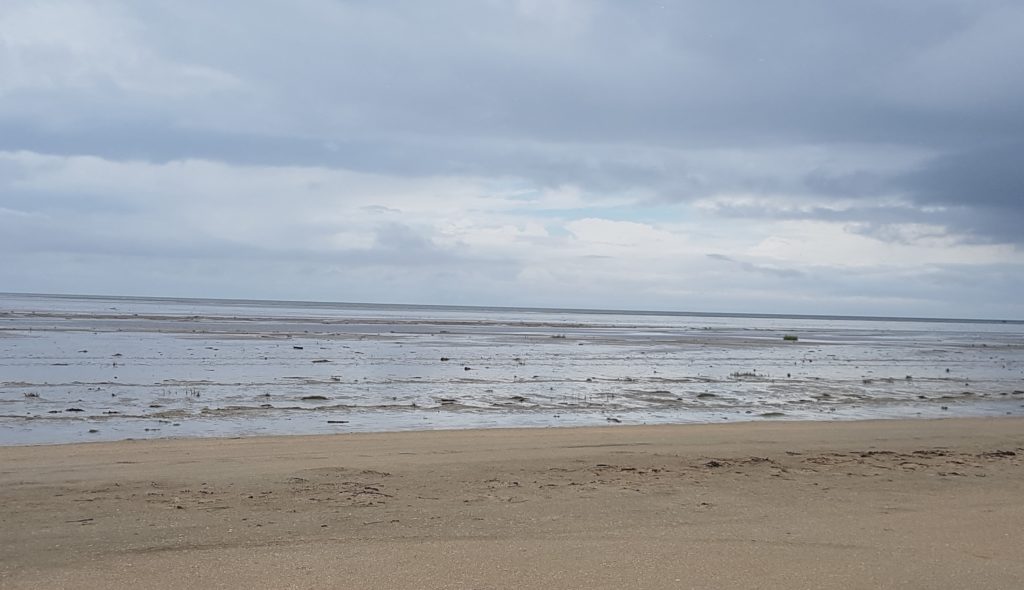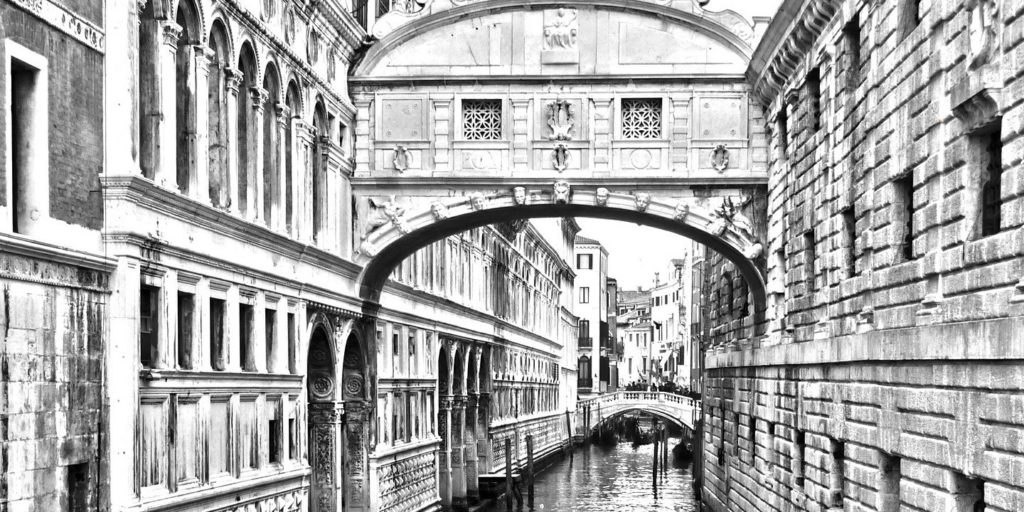It was cold and windy, scarcely the day
to take a walk on that long beach.
Everything was withdrawn as far as possible,
indrawn; the tide far out, the ocean shrunken,
seabirds in ones or twos…
– Elizabeth Bishop, ‘The End of March’
We followed the sandy road out from Sønderho village towards the dunes. A few dark-thatched houses straggled along the road at either side, built as low as possible to the ground, hunkered down against the west winds that sweep across the island in the winter. The road gave out at a break in the dunes, and then we were down on the wide beach, walking on the hard flat sand that stretched away in either direction for miles.
We were on the small Danish island of Fanø for the folk festival. My friend Sharron, a singer and musician and composer, had been invited over to perform solo and with her friend Nick, an extraordinary guitarist and lap-steel player; the three of us were also doing a set combining music and poems, Sharron’s melody lines on dulcimer and recorders, and Nick’s sweeping improvisatory sounds looping around my words. The whole village was full of musicians and festivalgoers, walking from one event to the next, and then all coming together for food and drink in the big tent next to the village hall. It was small-scale, maybe fifty or sixty people. There was a wonderful buzz of experimentation and collaboration, people from all over Europe and beyond sitting down at trestle tables with huge plates of stew and bread and pints of the local beer, talking about what we’d heard and what we’d enjoyed and what we were looking forward to hearing next.
Get the best of Moxy directly in your inbox.
This walk was an interlude, the beach a space away from the bustle of the festival. It was a mild, overcast day, the tide was far out as it always seems to be in those places where land and water interchange. We weren’t walking in order to get anywhere, we were simply walking; we kept on in the same direction, with the sea to our left, until we thought maybe we ought to turn back. With the sea now to our right, Nick and I walked ahead, with Sharron and Tasha, Nick’s wife, following along behind us.
∆
In Elizabeth Bishop’s poem ‘The End of March’, the speaker aims to reach a particular house, one she has noticed on previous visits to this beach:
I wanted to get as far as my proto-dream-house,
my crypto-dream-house, that crooked box
set up on pilings, shingled green…
She imagines ‘retiring’ to this house and doing ‘nothing’ – or rather, as she then says in a characteristic Bishop revision, ‘nothing much, forever, in two bare rooms’. She elaborates at some length on this ‘nothing much’:
look through binoculars, read boring books,
old, long, long books, and write down useless notes,
talk to myself, and, foggy days,
watch the droplets slipping, heavy with light.
At night, a grog à l’américaine.
I’d blaze it with a kitchen match
and lovely diaphanous blue flame
would waver, doubled in the window.
She goes on ruminating, observing a cable, speculating therefore on the possibility of electricity,
A light to read by – perfect! But – impossible.
And that day the wind was much too cold
even to get that far,
and of course the house was boarded up.
At this point the poem throws the reader off-kilter, and not just once but several times in quick succession. Having spent twenty-three lines painting a picture of the ‘proto-dream-house’ and what she might do in it, Bishop performs a shuddering U-turn, dismissing the whole fantasy in the space of two words: ‘But – impossible’. Two words and a dash, rather – the entire business of why this fantasy is impossible is left hanging, unstated, in the space of that dash, a kind of shrugged blank for the reader to fill in for herself. In the next two lines, Bishop pulls the rug even further out from under our feet, telling us that, in fact, the walkers on this occasion haven’t even reached the house, the wind is too cold, they have turned back – the whole description then, including the details of the green shingles, the palisade of what she thinks may be ‘railroad ties’, the wire perhaps leading to a generator – all of this detail the speaker has either imagined or filled in from memories of previous visits.
The next line performs another, more confusing turn, telling us in an apparently offhand way ‘and of course the house was boarded up’. But how can she know this with the house still in the distance? One explanation would be that they have got close enough on their walk to see that it is boarded up for winter. But this line – which is also the last line of the third and by far the longest of the poem’s four stanzas (the fourth describing the return back along the beach) seems to hold a deeper significance, not necessarily dependent on actual contact with the house. Of course the house is boarded up, shut up, inaccessible to the speaker, because it is and remains her fantasy house – her ‘proto-dream-house’, ‘crypto-dream-house’. Bishop’s terminology here, its ungainly hyphenation and oddly jarring semi-scientific tone, is striking. Proto-dream-house: the model, the prototype, for all her subsequent dream-houses. But crypto-dream-house – hidden, or secret, dream-house – what does Bishop mean by this? The house doesn’t seem particularly hidden, or secret – it is on the beach, in plain sight. Even if the speaker can only imagine the interior, she is free to observe the exterior, and must have done so, perhaps many times, in order to describe it so accurately. And yet the poem turns this assumption on its head – at least on this occasion, the house remains inaccessible, the walkers do not reach it. Maybe there is a stove (‘there is a chimney’), maybe there is electricity; but we don’t know, the house keeps its secrets. Something about that abrupt closing-down – ‘But – impossible’; ‘And of course the house was boarded up’ – suggests that this dream-house, and perhaps any dream-house, remains necessarily encrypted, hidden from the dreamer herself. Perhaps, too, it indicates the point beyond which, in the space of the poem, Bishop is not willing to go, in relation to her own vulnerability – her longing for, or need for, a dream-house in the first place.
∆
Had I read Bishop’s poem ‘The End of March’ before I went to Fanø? Surely yes; I had certainly known Bishop’s work for a long time before that. And it seems to me now that I must always have loved that poem, with its wide cold beach and its mysterious boarded-up house in the dunes. But only after I went to Fanø did the poem acquire its own landscape for me, attaching itself inseparably to the particular memory of walking on the beach at Sønderho with Sharron and Nick and Tasha.
It’s the walk back that I remember, the sea glittering away to our right, the hard flat gritty sand, Nick and I walking along together with Sharron and Tasha somewhere behind, so that we could have been the only two people on the beach; Nick talking about the difficulties of trying to make everything fit, how to live a creative life while also earning enough money, while also making time for family; how, above all, to give himself permission to take it seriously, his music, to allow himself to think that it mattered enough, that it wasn’t just a hobby or just a selfish use of his time. He turned the thoughts over as he spoke them; he was talking partly to me, and I talked too, about the same things, about the ways I’d found to carve out that space and to learn to believe that it did matter. But he was also talking partly to himself, thinking out the thoughts as he spoke them and weighing them up; he was talking to the wind, which took the words and carried them away, and to the sea, which listened from a long way out and said nothing. It was the kind of talking that could only perhaps happen on a beach, the two of us walking in parallel but also apart, friendly but also near strangers. We didn’t need to look at each other, we simply walked alongside and at a certain distance, close enough to hear, far enough to allow the words to be spoken and then disappear, to become part of the low continuous sound of the beach.
Was it so like Bishop’s beach, really? This was Denmark in July, not Massachusetts in March; the wind was warm and quite gentle, not the ‘rackety, icy, offshore wind’ that numbs the faces of the beach-walkers in Bishop’s poem. But the sea was far out, and it had that strange pale look under the low cloud that Bishop captures so exactly: ‘The sky was darker than the water / – it was the color of mutton-fat jade’. Everything was withdrawn as far as possible – above all the beach on Fanø shared that sense of withdrawnness, of an offered space in the conjunction of sky and sea and flat hard sand, a kind of opportunity that doesn’t declare itself with a label, like a therapist’s consulting room or a confessional, but nonetheless is there.
Bishop’s poem has a dedication underneath its title: For John Malcolm Brinnin and Bill Read: Duxbury. The dedication acts as a cue, something like a stage direction, to the reader: we can suppose that the ‘we’ in the poem, the ones whose faces are numbed by the wind, the ones who follow the tracks of the ‘big dog-prints’, who come across the mysterious ‘lengths and lengths… of wet white string’, who nearly reach the house in the dunes, but have to turn back because of the cold, the wind now numbing the other side of their faces – we can suppose, we do suppose, that this is Bishop and her two friends, and that they walked this beach at Duxbury, Massachusetts, on a rackety day at the end of March. We can suppose, too, that they talked while they were walking – or tried to, perhaps, shouting to each other against the wind: Should we carry on? Should we turn back? But the poem tells us nothing of what was said; indeed it tells us nothing at all of these people, beyond what they saw, what they encountered, beyond the bare fact of a ‘we’. It’s as though the poem wants to acknowledge that these specific, named people were there, but it isn’t going to tell us what they might have said to each other. Just as the dream-house keeps its secrets, so the poem keeps theirs, allows their words to be whipped away by the cold wind, taken and kept by the withdrawn sea.
Helen Tookey is a poet and writer based in Liverpool, where she teaches creative writing at Liverpool John Moores University. She has published two poetry collections with Carcanet Press, Missel-Child (2014) and City of Departures (2019), and is at work on a third. Currently she is collaborating with writer and musician Martin Heslop on a text and sound work developed from a residency at the Elizabeth Bishop House in Great Village, Nova Scotia, some of which can be seen here. The Beach at Sønderho forms part of a book she is writing about her engagement with the work of Malcolm Lowry and Elizabeth Bishop and, through them, with place and landscape.





